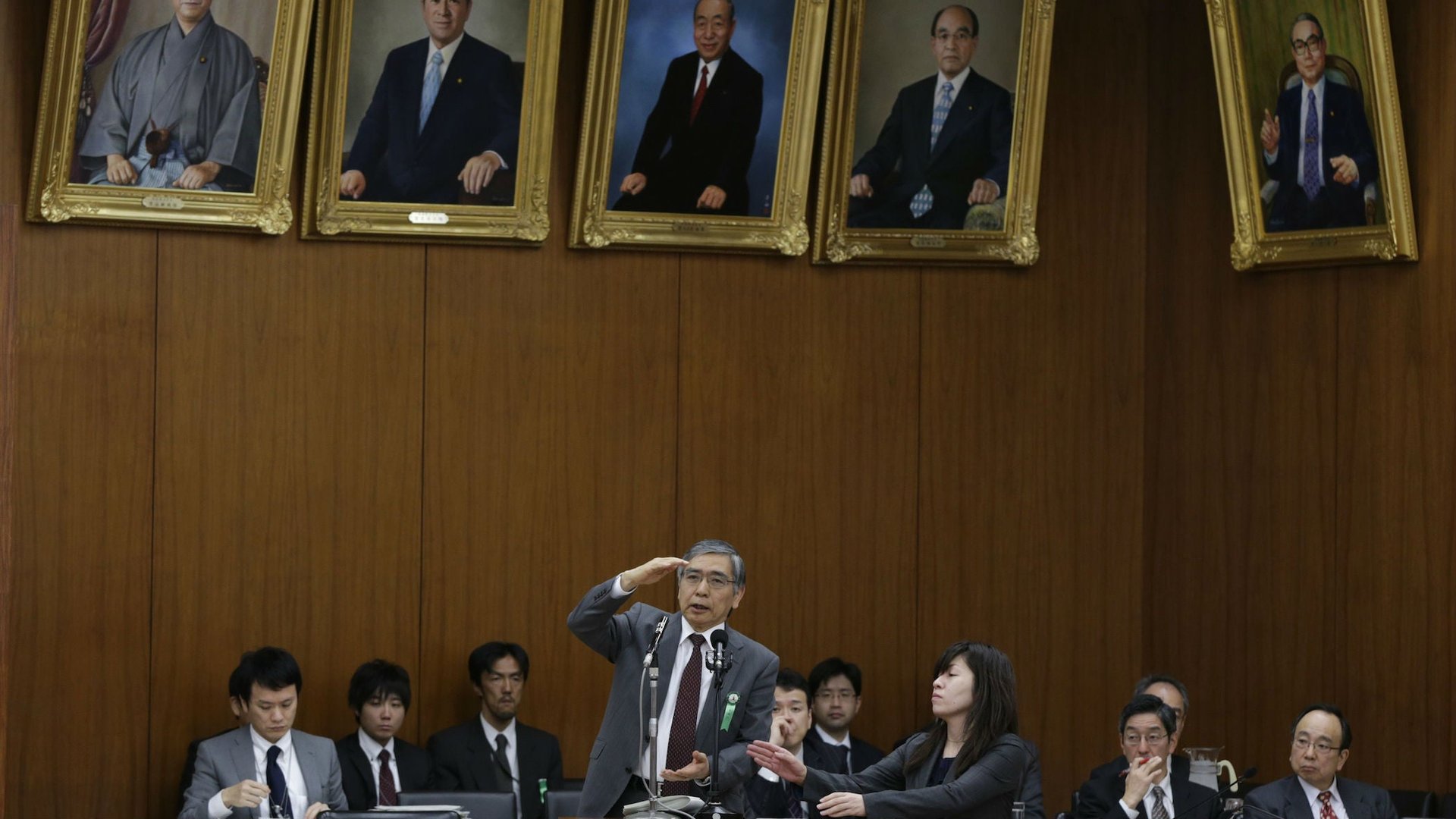Japan’s most powerful female bureaucrat read 150 books while she was in jail
As part of “Abenomics”, his program for kick-starting the Japanese economy, prime minister Shinzo Abe is making an attempt at “womenomics“—getting more women to join the country’s workforce. Atsuko Muraki, administrative vice-minister of Japan’s ministry of health, labor and welfare, is a prime example. The 57-year-old is the country’s top female government official, and only the second woman to ever reach that rank, according to a new profile of her by Bloomberg.


As part of “Abenomics”, his program for kick-starting the Japanese economy, prime minister Shinzo Abe is making an attempt at “womenomics“—getting more women to join the country’s workforce. Atsuko Muraki, administrative vice-minister of Japan’s ministry of health, labor and welfare, is a prime example. The 57-year-old is the country’s top female government official, and only the second woman to ever reach that rank, according to a new profile of her by Bloomberg.
As we’ve pointed out, Japanese women are massively underutilized in a country that’s suffering from a shrinking workforce and stagnant economy. In the World Economic Forum’s gender equality index last year, Japan ranked 101st out of 135 countries. About 8.2 million women added to the labor force could add as much as 15% to the country’s GDP.
Heeding observations like this, Abe has promised that by 2020, women will occupy 30% of government and business leadership positions. His party, the Liberal Democratic Party, is putting forward nine female candidates (out of a total of 79) for the upper house of parliament’s upcoming election. Abe has also called on corporations to have at least one female executive per company (paywall).
Muraki isn’t an untarnished member of the Japanese bureaucracy. In 2009, she was charged and imprisoned for certifying an organization that falsely claimed to help disabled residents (so that it could claim cheaper postage rates). A year later, she was released after an employee of hers said that he had fabricated the certification. While she was in jail she read 150 books.
Abe and economists would like to see more women like Muraki. Today, the woman who was once so shy growing up that she would would sometimes go months before speaking to the child sitting next to her at school manages more than 30,000 people and a budget of ¥29.4 trillion ($300 billion). She first joined the forerunner to the health ministry in 1978 after graduating from a local university because the private sector at the time didn’t offer jobs for women.
There is still far to go. Japanese bureaucrats work long, punishing hours, making it hard for women with families—Muraki herself said she considered quitting when she was in her 30s to spend more time with her two daughters. Currently, only 2.6% of bureaucrats of the position section chief or higher are women, according to a report from the minister of state for gender equality earlier this month.